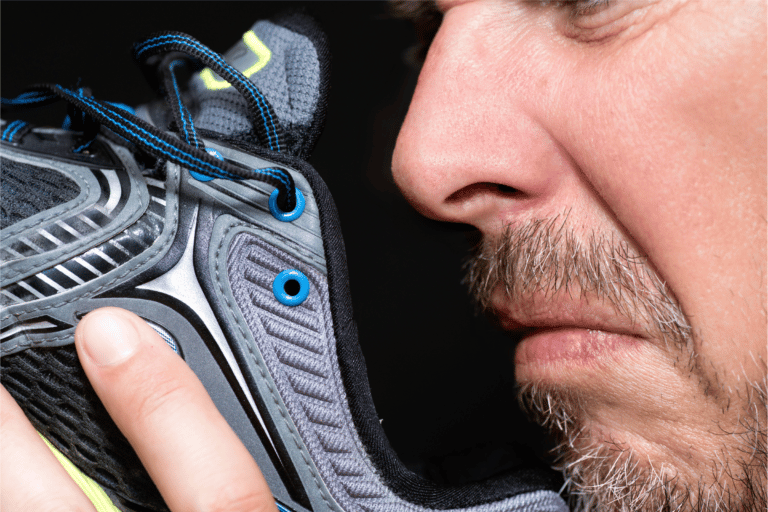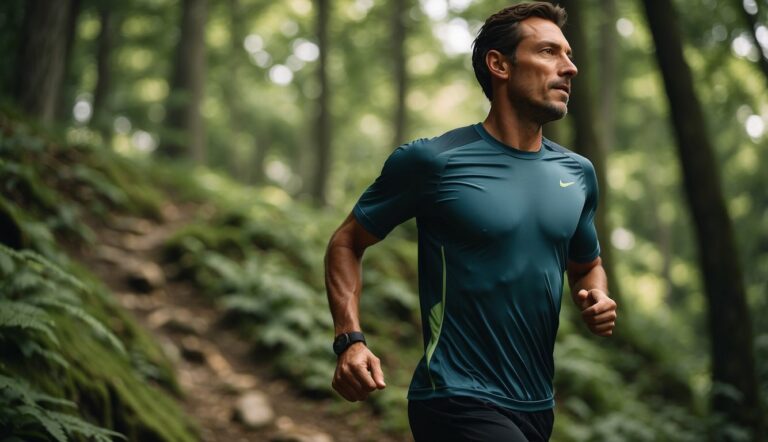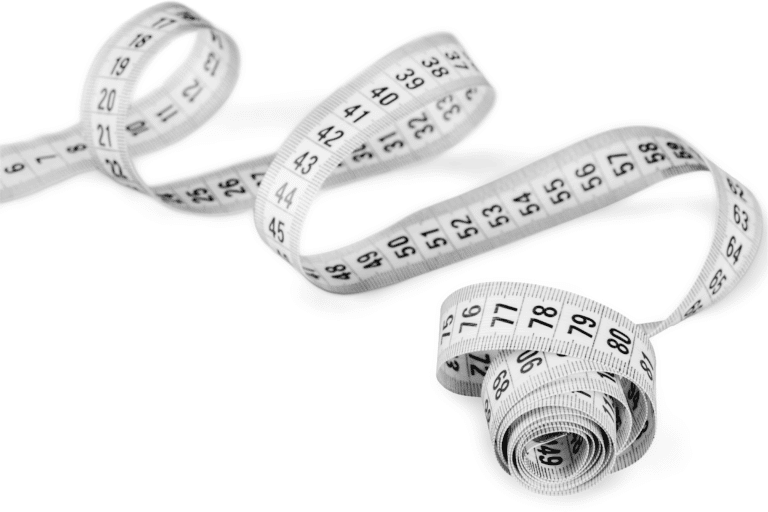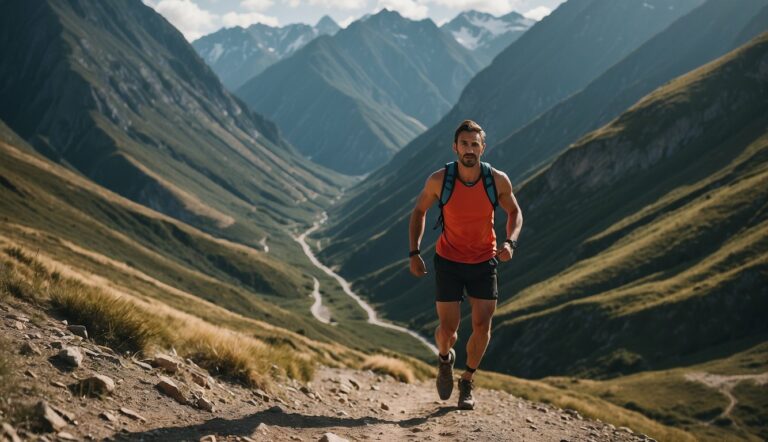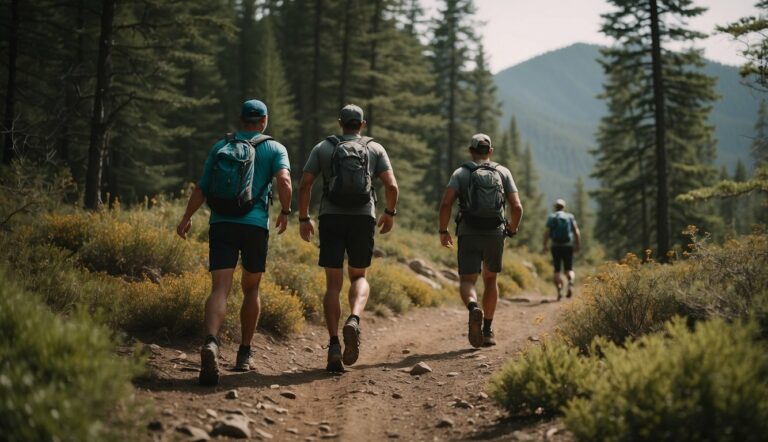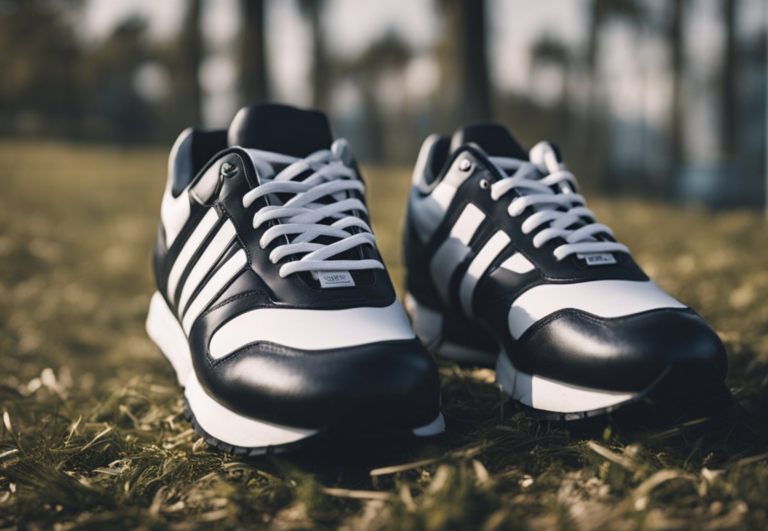What is the Ideal Drop for Trail Running Shoes? Understanding Heel-to-Toe Offset
When selecting trail running shoes, the heel-to-toe drop is a crucial factor that influences your running mechanics, particularly on the uneven terrain of trails. I advise runners to start with a drop that matches their running style and comfort level. For many, a moderate heel drop of around 6mm to 10mm offers a balance between cushioning and ground feel.
However, I recommend that trail runners consider lower drops if they tend to land mid-foot or forefoot, as this can promote a more natural running posture and potentially reduce injury risk. It’s essential to take into account personal preference, injury history, and the type of trails you’ll be running on while making your shoe selection.
My experience suggests that there is no one-size-fits-all answer to the ideal heel drop in trail running shoes; rather it’s a personal choice that should align with an individual’s biomechanics and comfort. Trail runners should experiment with different drops and pay attention to how their body responds during and after runs to identify the best option for them.
Shoe Drop and Its Importance
When selecting trail running shoes, understanding the heel-to-toe drop is crucial for aligning with my running form and reducing injury risk.
Definition of Drop
Drop refers to the height difference between the heel and forefoot of a running shoe. Zero-drop shoes have no height difference, mimicking a barefoot running experience. Conversely, a high drop, generally considered to be 8mm or more, can lead to a heel strike pattern.
Low drop shoes, usually categorized between 0-6mm, encourage a forefoot or midfoot strike which is often deemed more natural and may reduce impact stress on the body.
Impact on Running Form
The variation in drop affects my foot strike and, subsequently, my running form. High drop shoes cater to heel strikers by providing substantial cushioning at the heel. This can be comfortable for runners accustomed to a heel strike pattern but may not be ideal for those looking to transition to a midfoot strike.
A low drop or zero-drop shoe encourages natural body alignment and may promote a more efficient running cadence, leading to a forefoot strike which tends to increase cadence and can reduce impact loads.
Relationship Between Drop and Injury
While there is no one-size-fits-all answer, shoes with a drop that complements my natural stride have been shown to reduce the risk of injury. Higher drops can be beneficial for those with Achilles tendon issues, as they decrease the strain by keeping the heel elevated.
For runners prone to forefoot pain or looking to strengthen their lower leg muscles, low drop shoes might be beneficial. It’s important to transition gradually to avoid overstressing muscles and tendons that may be unused to a new drop level.
Selecting the Right Trail Running Shoes
In my experience as a UESCA certified running coach, choosing the right trail running shoes comes down to a balance of fit, traction, and proper cushioning for the terrain you’ll encounter.
Considerations for Fit and Comfort
Fit is paramount for any running shoe, especially for trail. A proper fit ensures comfort and helps prevent blisters and hot spots. Trail running shoes should offer a snug, supportive fit that allows for natural foot swelling during longer distances. Look for:
- Toe Box: Enough room to wiggle your toes without chafing.
- Midfoot: Secure feel without being overly tight.
- Heel: Comfortable grip to avoid slipping.
Terrain and Shoe Traction
The terrain dictates the type of traction needed. A lugged sole is best for running on dirt, mud, gravel, roots, and rocks. Select shoes with:
- Deep, multidirectional lugs for loose or technical trails.
- Moderate lugs for mixed or hard-packed trails.
| Terrain Type | Suggested Lug Depth |
|---|---|
| Soft, Muddy Trails | 5mm-7mm |
| Rocky, Technical | 4mm-6mm |
| Mixed/Hard-packed | 2mm-4mm |
Cushioning and Stack Height
The cushioning a shoe provides is usually correlated with its stack height; that’s the amount of material between your foot and the ground. When considering cushioning for trail running shoes, think about:
- Distance: Longer runs may need more cushioning for comfort and durability.
- Flexibility: Adequate cushioning without compromising the flexibility needed for varied terrain.
- Performance: Balanced cushioning that helps with energy return and reduces fatigue.
Stack height often ranges from low (close to the ground for stability) to high (more cushioning for comfort).
Key Features of Trail Running Shoes
When selecting trail running shoes, key features such as protection and durability, weight and responsiveness, and support and stability are crucial for trail performance and safety. These elements vary based on terrain and individual runner needs.
Protection and Durability
Trail running demands sturdy footwear that can withstand repeated impacts from rocks, roots, and rough terrain. Durable materials are essential to protect feet from debris. A rock plate within the sole adds an extra layer of defense against sharp objects. Uppers should be rugged yet breathable to manage varied trail conditions and help prevent overheating.
- Materials: Durable, abrasion-resistant fabrics
- Construction: Reinforcements at high-impact zones
- Rock Plate: Shields the foot from sharp rocks and roots
Weight and Responsiveness
Effective trail shoes balance between being lightweight for agility and having enough substance to absorb the shock of running on uneven surfaces.
A lighter shoe can improve your responsiveness on the trails, but it shouldn’t compromise on protection. Optimizing for weight allows for nimble movement, particularly on long runs where footwear can impact fatigue levels.
- Lightweight: Aids in reducing runner’s fatigue
- Responsive Cushioning: Absorbs impact while allowing for quick movements
Support and Stability
Stability is paramount on unpredictable terrain. Features that support the foot and improve stability can help avert injuries when navigating technical trails.
The outsole design, with its lugs and grip patterns, plays a considerable role in managing mud and slick surfaces. Adequate arch support and a shoe’s ability to accommodate the natural gait further contribute to secure footing.
- Outsole Grip: Lugged patterns for traction in mud and on rocky paths
- Arch Support: Designed to cater to different arch profiles for personalized stability
Shoes should be matched to individual biomechanics, ensuring that comfort and protection work together to keep the runner safe and stable across various trail conditions.
Popular Trail Running Shoe Models
In selecting trail running shoes, understanding the variety that exists among popular models can be crucial. Your choice should align with both personal preference and the technical demands of the trails you plan to run.
Zero-Drop and Minimalist Options
Zero-drop shoes, such as the Altra Lone Peak 7, characterize the minimalist trail shoe category. These shoes keep your heel and forefoot at the same height, foster a natural stride, and are beloved for their barefoot feel. However, they may require an adjustment period for those used to traditional drop shoes.
| Shoe Brand & Model | Drop | Features |
|---|---|---|
| Altra Lone Peak 7 | Zero | Balanced cushioning, FootShape™ toe box |
| Merrell Trail Glove | Minimal | Flexible, ground connection |
Maximalist and Cushioned Variants
In contrast, maximalist shoes like the Hoka Speedgoat 5 provide ample cushioning and support for long distances. The plush comfort found in such shoes is ideal for runners seeking shock absorption and underfoot protection on rugged trails.
| Shoe Brand & Model | Drop | Features |
|---|---|---|
| Hoka Speedgoat 5 | 4mm | MegaGrip outsole, deep cushioning |
| Brooks Catamount 2 | 6mm | Responsive cushioning, TrailTack traction |
Shoe Recommendations Based on Runner Preferences
My market research and feedback from runners often point to personal preference dictating their ideal shoe.
Whether the preference is for a lightweight model like the Salomon S-Lab Sense or a sturdy, protective one such as the Brooks Catamount 2, there are options for every runner. For those preferring a mix of support and lightness, the On Cloudultra 2 is noteworthy.
- Lightweight Agility: Salomon S-Lab Sense
- Durability & Protection: Saucony Peregrine 13
- Balanced Support & Lightness: On Cloudultra 2
Incorporating Trail Running Shoes Into Your Running Gear
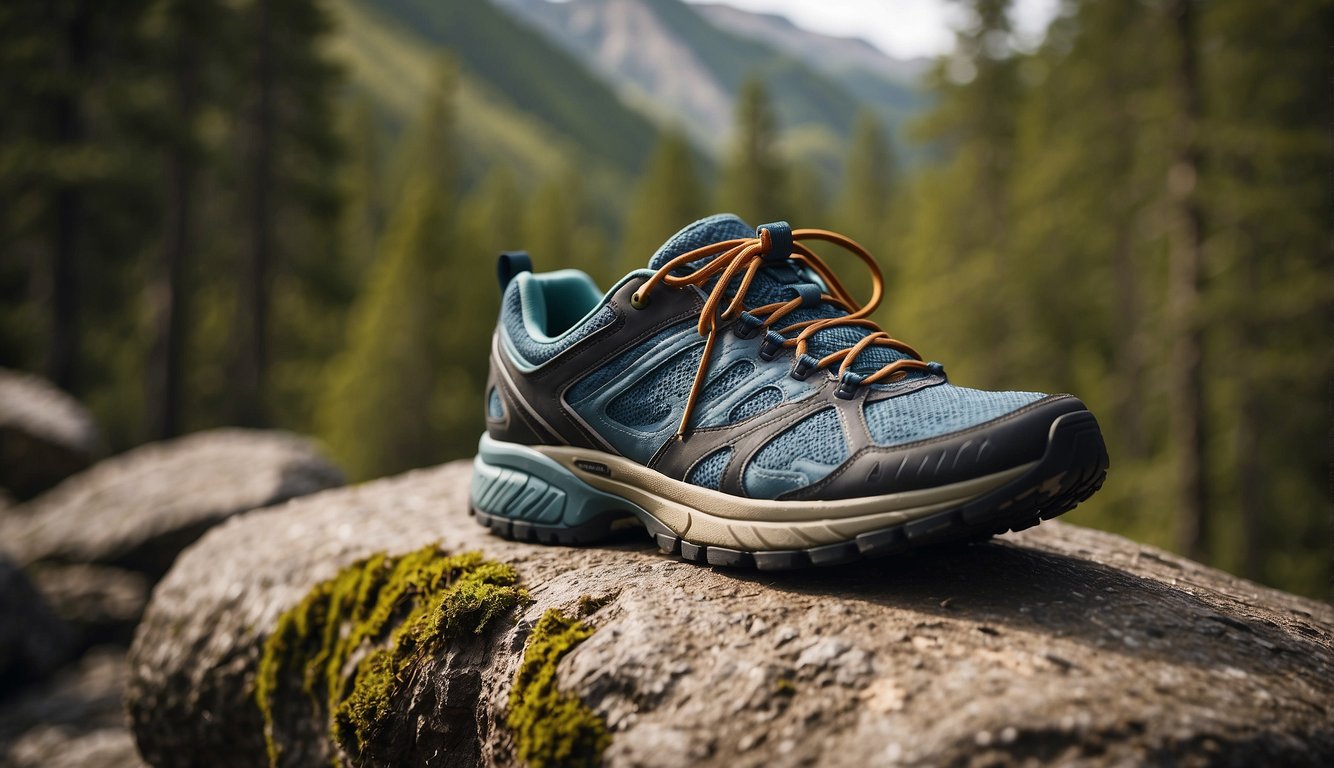
The ideal drop in your trail running shoes can drastically affect your running efficiency and comfort. It’s vital to choose the right shoe with the appropriate heel-to-toe drop to complement your running form, prevent pain, and protect your feet on varied terrain.
Transitioning to New Shoe Drops
When transitioning to a new drop, start with shorter runs to allow your body to adapt. A drastic change in drop can alter your landing pattern and strain different muscles. For those used to high-drop shoes, typically sporting about 10mm difference between heel and toe height, a gradual shift to lower-drop options can help prevent Achilles tendon stress.
Road-to-trail runners might opt for a more versatile pair, which aids in a smoother transition between pavement and singletrack surfaces without compromising on foot protection or responsiveness.
Integrating Shoes with Running Technique
Choosing shoes that align with your technique is critical; if you land on your heel, a regular drop above 6mm may suit you best. Runners with a forefoot or midfoot strike usually prefer a lower drop for a more natural stance.
Factors like a wide toe box for wide feet, sufficient cushioning, and rockplates for technical terrain need consideration for better efficiency and safety. If the trails you frequent are littered with obstacles, gaiter-compatible shoes with a sturdy rockplate can protect from painful encounters with rocks and roots while maintaining responsiveness.
Maintenance and Longevity of Shoes
To maximize the longevity of your trail running shoes, regular maintenance is key. This includes cleaning off mud and debris post-run, checking for wear and tear, especially if your routes include rugged technical terrain, and rotating between pairs if possible.
Shoes with carbon fiber elements often offer increased durability and lifespan. Proper care ensures not only the longevity of your gear but also its continued performance in protecting your feet and optimizing your running form on the trails.

